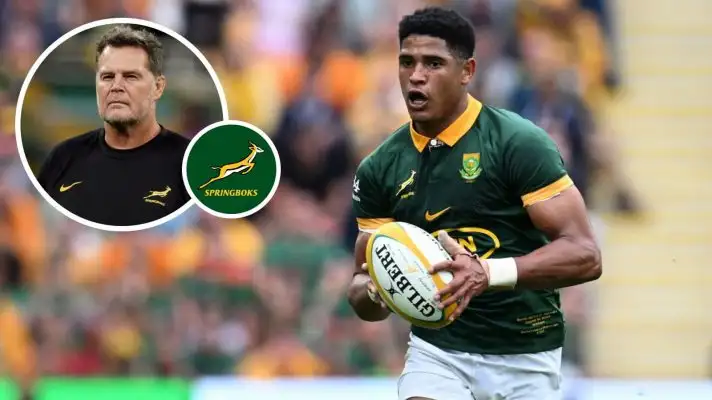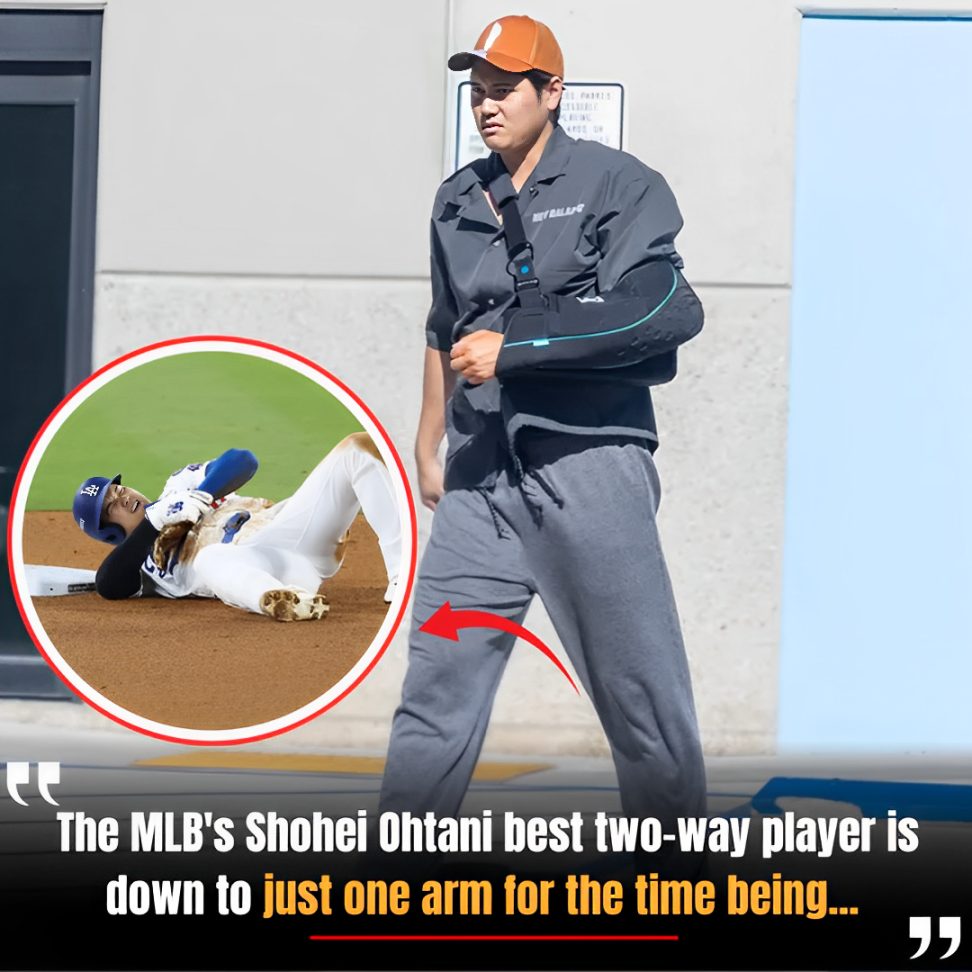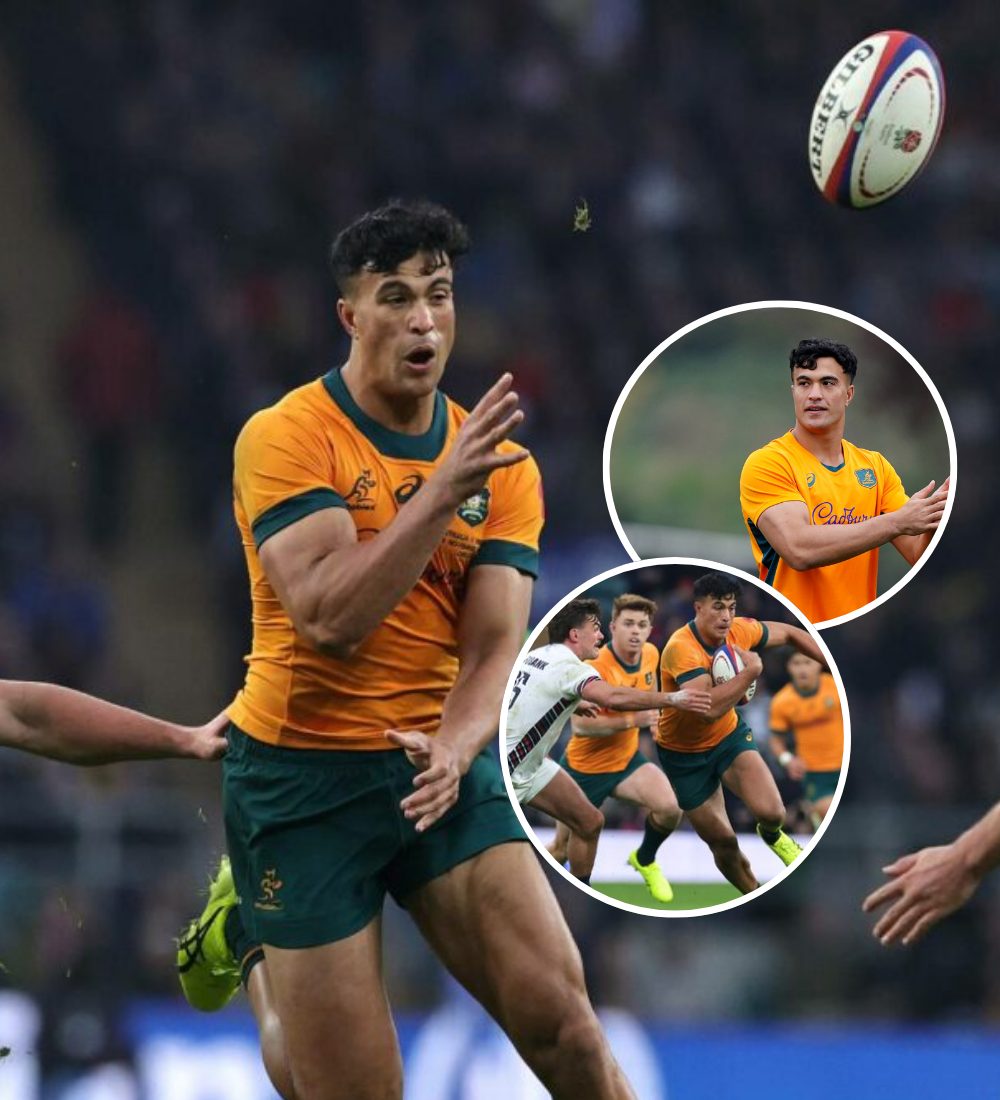Following the All Blacks 28-31 Bledisloe Cup victory over Australia, here are five takeaways from the Rugby Championship match in Sydney.
The All Blacks came steaming out of the blocks and racked up a 21-point lead after just 15 minutes, threatening of an absolute blowout. Will Jordan tore through the frankly woeful Wallabies defence with Rieko Ioane and Caleb Clarke following soon after as the Razor’s men showed a real ruthless edge.
A Joe Schmidt special got Australia on the board as Fraser McReight sped over the line from a marvellous set play at the lineout but Australia shot themselves in the foot moments later as Ardie Savea hit back for the visitors. The Wallabies would have the final say of the half as hooker Matt Faessler powered over the line from a rolling maul.

This left the Wallabies staring down a 14-28 deficit at the break and that was extended soon after by a Damian McKenzie penalty.
The All Blacks have held the Bledisloe Cup since 2003 and despite a mighty mauling in the first half, their record came under real threat as Australia turned what looked destined to be a battering to an outright blockbuster. Schmidt’s charges were relentless in their attempts to get back into the game and were helped by some incredibly difficult officiating calls but tries from Hunter Paisami and Tom Wright gave them a sniff at the death.
However, the All Blacks held on just long enough to seal an all-important victory that not only sees them retain the Bledisloe Cup for another year but take one step closer to avoiding the wooden spoon.
Overall, it was a wonderful addition to the storied history of the Bledisloe Cup.
Wallabies show the potential is there
Give Schmidt a strong platform and he will devise a world-class set-move to unlock any defence. It is a trademark of the experienced honcho with his Leinster and Ireland teams thriving off of these moves and to an extent the All Blacks too during his respective tenures with those sides.

However, there is a crucial difference between those teams and the one he is currently coaching now: Leinster, Ireland and New Zealand all had that strong platform and a well-oiled lineout and scrum machine and Australia don’t.
When the set-piece was stable and efficient enough, we saw just how lethal Schmidt’s plays can be with a sensational move resulting in McReight’s score. Lineouts still remain the richest sources of tries in professional rugby and that was on full display again today but for the Wallabies to be successful going forward, then they must sharpen up this facet of their game even more.
Outside of the brilliance of the set plays, Schmidt will be pleased with the spirit his side showed after shipping three early tries and staring down an annihilation. McReight’s selection over the excellent Carlo Tizzano did raise a few eyebrows but the former more than repaid the head coach’s faith as did Paisami whose try put Australia in the position to snatch a result.
Harry Wilson, meanwhile, put in a stunning performance in the back-row as he continues to prove Schmidt wrong for overlooking him in July but what was most telling about Australia’s performance was their fight to get back into the game after the heads well and truly dropped against the Pumas last time out.
Many Wallabies players have produced standout individual performances throughout the Rugby Championship but today we saw a far better collective effort after the tragic opening 15 minutes.
All Blacks still a 60-minute team
While the Wallabies were well below par in the first 20 minutes, the same is true for Robertson’s All Blacks in the final quarter.

In fact, we could even say the All Blacks were a 45-minute team in this one as that was the time stamp on the last New Zealand points of the day in the form of a McKenzie penalty.
Still, the premise stands in that the All Blacks are struggling to put together a complete 80-minute shift. The opening stanza was a joy to watch and had shades of the All Blacks of old as they cut open the Wallabies at will in the first 25 minutes. The pace of the attack, accuracy with ball in hand and spatial awareness was simply brilliant but they let their trans-Tasman rivals grow into the game and it very nearly cost them.
In the past, we would have seen New Zealand teams put their foot on the throat of the opposition and give them nothing. The All Blacks had the Wallabies on the ropes and it felt like the Australians were heading for another unwanted record score but that didn’t happen. The burning question is why are the All Blacks falling off?

Sure at half-time Scott Robertson had to replace Ethan de Groot and Jordie Barrett due to injury but it would be criminal to say Tamaiti Williams and Anton Lienert-Brown are the issue at hand. Complacency is potentially a concern, perhaps even leadership and certainly playing the big moments in the game.
The inexperienced bench failed to land a punch yet again but this time around the wheels were falling off before the bulk of the players got between the four lines. Ultimately until Razor can sort this issue out the All Blacks will struggle to dance with the world’s best.
All Blacks breakdown brilliance
Alas, it is not all doom and gloom for the All Blacks as once again, they flexed a real strength of theirs in what is becoming a hallmark of Robertson’s tenure; the breakdown.
Springboks boss Rassie Erasmus praised New Zealand’s work at the breakdown after both Test matches in South Africa with the head coach admitting that it was an area of the game where his side were comfortable outplayed. Against the Wallabies, the result was no different as the men in black bossed the floor battle. Sam Cane earned his 99th Test cap today in what is set to be his final international season and while he still has his critics, he was sensational at the breakdown yet again as he has been for much of his career. It was the kind of performance that won’t feature in the highlight reels but just as and probably more important.

It was not a solo effort, however, as Savea, Scott Barrett, Tyrel Lomax, Tupou Vaa’i and Wallace Sititi all made their mark in this facet of the game with the latter being another standout of the bunch. There were question marks around Sititi’s inclusion in the squad at the start of the international season and if there are those maintaining that stance, they simply are not watching.
Sititi was simply breathtaking once again and while the calls remain for Savea to switch to the seven jersey and the rookie to number eight, the balance right now is spot on and that all that matters – forget the digits on the back. The Chiefs’ star was phenomenal in the closing stages of the match, winning crucial turnovers at the lineout and breakdown and is not only a star for the future but one right now.
Work-ons for Bledisloe II
The opening 15 minutes of Bledisloe I was an absolute nightmare for Wallabies fans. It was chalk and cheese between the sides with the Australians absolutely porous on defence both in terms of players not executing their roles in the defensive system and unsatisfactory individual efforts.
Take the first try, you CANNOT leave that big a hole in the defensive line for Jordan. It was easy for the full-back who just sprinted through to score and it was not even an elaborate play that opened the defence up. The second try was off a missed tackle and then the retreating defence couldn’t scramble in time and the third simply shouldn’t have happened. Clarke is a big wing but he can’t be allowed to march through as he did and Wright will not like the look of that in the review of this game.
It’s telling stat that the Wallabies had conceded 78 points in 80 minutes when Karl Dickson blew his whistle for half-time. Defensive systems take time to bed in but much of the shortcomings from Schdmit’s men is down to execution and work-rate.
It has to be incredibly frustrating for Schmidt because while the Wallabies have a leaky defence their attack showed some serious promise and the Australians had their opponents giving away penalty after penalty during their second-half surge.
That will be a concern from an All Blacks standpoint. In many ways Test rugby is about leveraging penalties through pressure which is why the best sides concede fewer penalties when under the pump.
New Zealand struggled under pressure getting two yellow cards at one time with Anton Lienert-Brown the victim of repeated infringements while Clarke’s knockdown was out of pure desperation. Going down to 13 when already on the back foot almost threw the game and Razor will be looking to squash this issue before it becomes a trend.
The All Blacks have started hot in most of their Test matches this year but have fallen off the pace as the game has gone on. Today, they were good enough to hold out for the win but in the two Tests prior they were not. Better teams would have knocked over the All Blacks today.
Ultimately, Robertson will be pleased to not be the first All Blacks coach since 2002 to surrender the Bledisloe Cup but will be well aware that Australia will smell blood for next week.






